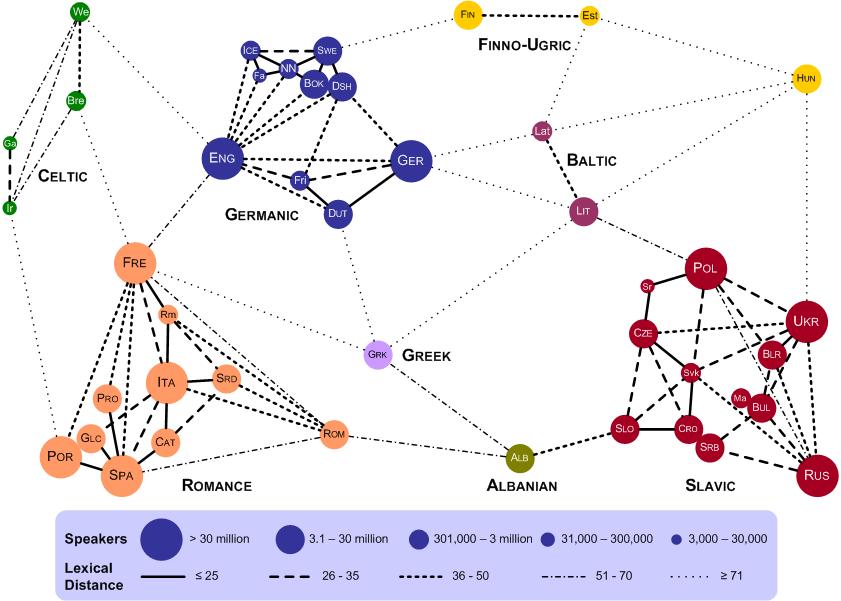If you are travelling the Americas you get by with a knowledge of Spanish and English, with a few exceptions. In the rest of the world you are worse off.
In a world of 7,000 languages, possibly more, there are huge differences in the ways we humans communicate verbally with each other. Fortunately most languages are related to at least some other languages.
The map

This world map of language families looks like a piece of art. Click to expand the image. (Source: Wikimedia)
You may learn how languages actually are grouped into families here.
Besides, there have always been languages that are more spoken than others. At one point in history some idealists wanted to create a new, common language – and they called it Esperanto. It lost in the competition with natural “lingua francas”, i.e. languages that were either spoken as a mother tongue or as a second language. English is today the world’s “default” language, to borrow an expression from the world of information technology.
Did you know that English is a Germanic language, but that it is more closely related to French?
There is a website with an illustration of the “Lexical distance among the languages of Europe”. This is interesting, for it’s an illustration of a multivariate language scene in the Old World. i.e. Europe.
Europe is not a vast continent, only 10% larger than the United States. On the other hand all circles indicate there are a number of languages.
The illustration shows roughly (1) how many speak a language, (2) the names of the major language families, (3) what languages are related to one another, (4) and how close that relationship is.
This is fascinating, right?
You can easily see that English is in fact placed slightly closer to French than German.
“It’s all Greek to me”, you may say. In fact, Greek is a loner in terms of languages. Isn’t that strange considering the influence the Greeks have had on thoughts and science?
Their neighbour to the north, Albania, is also placed alone and quite far away from the others.
Languages are not static but evolve over time. Some, like English started out as a Germanic language as a result of migrations. When William conquered England in 1066 he introduced French into the language, and this influence increased over time. Likewise, languages die or are pushed to the limit of extinction. Look at the group on the top left of the illustration above, the Celtic languages, for an example.
More (addition per April 2017)
There is a renewed and more detailed version of the second map available.



